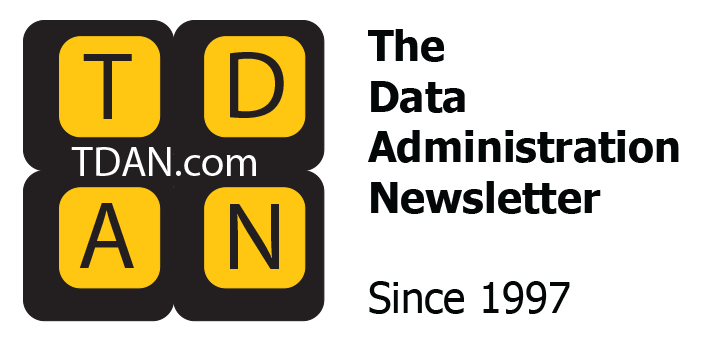
Data security governance is becoming increasingly critical as organizations manage vast amounts of sensitive information across complex, hybrid IT environments. A robust governance framework ensures that data is protected, accessible, and compliant with regulations like GDPR and HIPAA. By centralizing access controls, automating workflows, and applying consistent security measures, organizations can more effectively and efficiently manage their data across cloud and on-premises systems. This article explores the importance of data security governance, its key components, and how a data-centric security architecture empowers organizations to protect sensitive data, streamline governance processes, and maintain compliance in today’s evolving digital landscape.
How Does Protecting Data Fit in the Data Governance Charter?
Protecting data is a fundamental component of every data governance charter. According to Jonathan Reichental in “Data Governance for Dummies,” data governance encompasses key aspects such as roles and responsibilities, policies, metrics, and the lifecycle of data. Within this scope, protecting data involves maintaining privacy, availability, usability, consistency, compliance, and security, which are all essential to a strong data governance framework.
As data governance professionals know, data protection governance can be categorized into privacy and security. Privacy is primarily concerned with safeguarding Personally Identifiable Information (PII) and ensuring that access to sensitive data is controlled. This means implementing strict policies on who can view or modify certain data, based on the principle of least privilege. Data security, on the other hand, focuses on protecting the data from unauthorized access, breaches, loss of integrity, or theft. These two dimensions ensure that data remains both secure and accessible only to authorized parties.
Bob Seiner expands on this by stating that everyone who interacts with sensitive data should be formally accountable for its protection. This viewpoint stresses the importance of creating a culture of responsibility and awareness within an organization. Seiner’s viewpoint aligns with the six focus areas of data governance identified by The Data Governance Institute: strategy and integration, policy and standards, data quality, privacy and security, architecture, and business intelligence. These areas, especially privacy, compliance, and security, are critical to ensuring the long-term integrity and usability of organizational data.
In essence, protecting data is not just a technical task, but also an organizational responsibility. It requires clear policies, the right technological safeguards, and active participation from all data users. When integrated within the data governance charter, data protection becomes a cornerstone of ensuring an organization’s overall data strategy remains secure and compliant.
Why DIY Fails You and Your Organization
Relying on a DIY approach to data security is a losing strategy for you and your organization. Analyst firm Gartner argues it leads to fragmented, database-by-database, and system-by-system security controls. And these are inefficient and impractical. In an era where data environments are diverse and rapidly changing, cloud-native security controls — though effective in isolated environments — lack the cross-platform integration necessary for cohesive security management. This creates a patchwork of protection measures that require multiple management consoles, increasing complexity and leaving gaps in security coverage.
Moreover, data security is often embedded within broader solutions like web gateways or cloud access security brokers rather than existing as a standalone service. This fragmentation complicates the consistent application of security controls, especially when dealing with sensitive data such as Personally Identifiable Information (PII) and intellectual property. These data types require heightened protection due to the significant legal, financial, and reputational risks associated with breaches or unauthorized access. As Gartner argues, “True privacy engineering demands far more than a few isolated security measures,” signaling the need for integrated, well-thought-out security frameworks rather than piecemeal solutions.
The tangible costs of failing to adopt a comprehensive data security strategy are real and severe. From ransomware attacks to accidental data exposure, the consequences of inadequate control over data access can cripple an organization’s operations and erode trust with stakeholders. Additionally, inefficient DIY security setups often undermine other essential security measures, such as data loss prevention (DLP) tools, making them less effective. In short, the fragmented approach not only fails to protect sensitive data, but also hinders the overall security posture of an organization.
What is Data Security Governance?
Data security governance is a comprehensive, end-to-end framework designed to manage and protect data across increasingly complex and hybrid IT environments. It centralizes access controls, allowing data stewards to define and enforce policies, automate workflows, and apply consistent security measures across all data sources. This ensures compliance with regulations like GDPR, CCPA, and HIPAA, while providing holistic data visibility and secure access across both cloud and on-premises systems.
By adopting a data-centric security architecture, organizations can apply consistent controls across diverse data silos and applications. This centralized and automated approach empowers teams to manage data with precision, ensuring that everyone handles data understands how to treat it based on its classification. It also supports security professionals in developing solutions that align with governance standards. Key benefits include unified governance, automation of manual tasks, improved data stewardship, and the elimination of fragmented tools, making data security governance more effective and seamless.
Parting Words
In conclusion, effective data security governance is essential for organizations to safeguard sensitive information, ensure compliance, and streamline data management across increasingly complex IT ecosystems. By adopting a centralized, automated approach that applies consistent controls across all data sources, organizations can mitigate risks, enhance collaboration, and maintain trust with stakeholders. The integration of data-centric security architectures and unified governance platforms not only simplifies the enforcement of security policies, but also empowers teams to proactively protect data while adapting to evolving regulatory requirements. As data continues to grow in volume and importance, a well-structured governance framework is crucial for long-term success and resilience.
